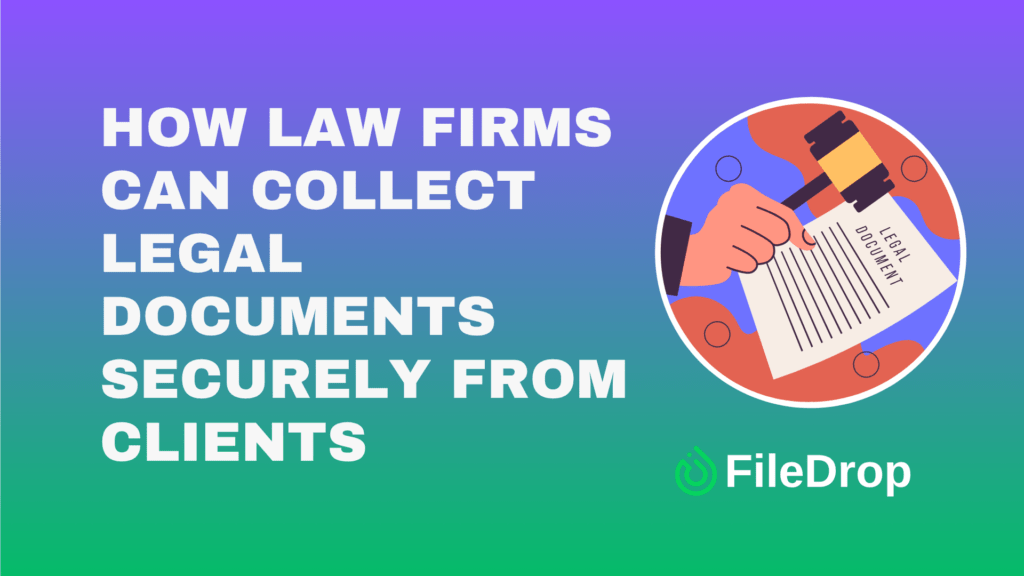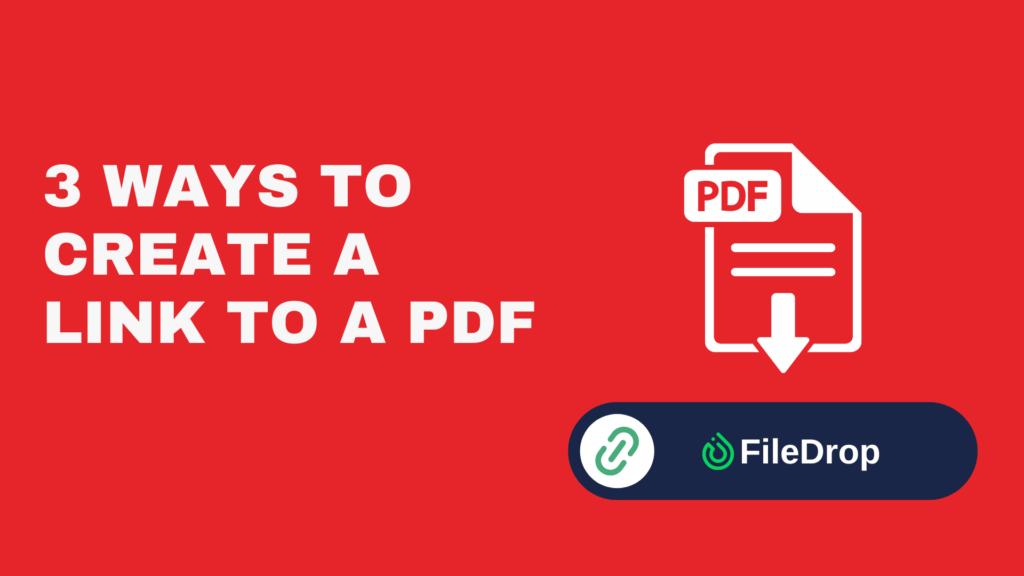In the legal industry, handling sensitive documents with utmost care isn’t just a best practice — it’s a legal and ethical requirement. Yet many law firms still rely on email to collect contracts, affidavits, IDs, discovery materials, and more. This method is not only outdated, but also insecure, disorganized, and inefficient.
Thankfully, there’s a better way.
In this post, we’ll walk through how your law firm can use FileDrop to securely collect legal documents from clients — without relying on email, client portals, or complicated login systems. This is a vital improvement for any law firm looking to modernize its client intake process.
Why Email Is Not Secure for Legal File Collection
Email might be convenient, but it falls short in every area that matters when it comes to handling confidential legal information.
- Lacks encryption: Standard emails aren’t end-to-end encrypted, and even secure providers can’t protect messages once they’re downloaded or forwarded. If a client’s inbox is hacked or a message is intercepted, sensitive files — such as IDs, affidavits, or evidence — could be exposed. This can violate privacy laws and breach client trust.
- No audit trail: Email lacks built-in logging or tracking. There’s no automatic record of who accessed what file and when. This makes it difficult for law firms to verify timelines, ensure compliance, or produce evidence in case of audits or disputes.
- Attachment size limits: Most email platforms limit file attachments to 25MB. This prevents the transfer of large files like scanned case bundles, video evidence, or detailed exhibits. Workarounds — such as sending multiple emails or using compression — are inefficient and error-prone.
- Disorganized delivery: Email attachments arrive sporadically and without context. Legal staff must manually sort, rename, and store files, which is both time-consuming and risky. Misfiled or lost documents can delay cases and frustrate clients.
- Risk of human error: It’s alarmingly easy to send documents to the wrong person. A single typo in an email address can result in a serious data breach with legal and ethical implications.
The result? Wasted time, client confusion, and serious compliance risks that modern law firms can’t afford to overlook.
Introducing FileDrop: A Secure, Simple Way to Collect Legal Documents
FileDrop’s File Form feature allows law firms to set up secure, branded upload portals in minutes. Clients simply drag and drop their files — no login required. This gives legal teams a modern and professional way to collect documents from clients while maintaining organization and security.
Here’s what makes FileDrop uniquely effective for the legal sector:
- Upload links with expiration and password protection: Control exactly who can upload files and when. This minimizes unauthorized access and creates a stronger chain of custody for every document received.
- Direct-to-Google Drive storage: Files are saved automatically into pre-defined folders in your Google Drive. You can configure each form to route documents by case, matter type, or client name — eliminating the need for manual sorting.
- Customizable form fields: Collect structured information alongside each file upload. Add fields such as “Client Full Name,” “Case Number,” or “Document Type” to simplify categorization and support your broader client intake process.
- Real-time notifications: Receive email alerts instantly when a client submits documents. This helps your legal team stay responsive, update case files faster, and keep clients informed of progress.
- Google Sheets metadata logging: Automatically record each upload event in a connected Google Sheet. You’ll have a running log of submission times, file names, client information, and associated cases — ideal for audits, compliance tracking, or project management.
- Branding and customization: Maintain a professional, firm-branded experience. Add your logo, custom instructions, and a personalized message to your File Form so clients feel confident and secure when uploading sensitive information.
With FileDrop, law firms can standardize how they collect legal documents across all departments and practice areas. Whether it’s litigation, corporate, family law, or immigration, File Forms ensure every document intake is secure, traceable, and easy for clients to complete — even from a smartphone.
Most importantly, this modernizes and simplifies your entire client intake process, reducing friction from the very first interaction and helping your firm stand out as tech-forward and client-friendly.
Real Example: Collecting Evidence for a Personal Injury Case
Imagine your firm is representing a client in a personal injury case. You need:
- Photos from the scene
- Scanned medical reports
- Witness contact details
Instead of asking the client to email all this, you send them a FileDrop link like: yourfirm.getfiledrop.com/evidence
Here’s how it works:
- The client accesses the upload link on their phone or computer.
- They drag and drop the required documents into the upload form.
- They fill in any fields you’ve included — such as case number or their full name.
- Once submitted, the files are saved into a specific folder in your connected Google Drive.
- You receive an email notification immediately.
- The file upload event is optionally logged in a connected Google Sheet for auditing and tracking purposes.
No bouncing emails, no lost attachments, and everything is secure, timestamped, and centralized. It’s a much smoother client experience — and a powerful upgrade to your client intake process.
Step-by-Step: How to Set Up Your First Legal File Form
Ready to modernize how you collect legal documents from clients? Here’s how to set up your first FileDrop File Form tailored for your law firm’s intake process:
Step 1: Create an Account
Go to getfiledrop.com and sign up for a free account using your Google Workspace credentials. This will allow seamless integration with your Google Drive for secure file storage.
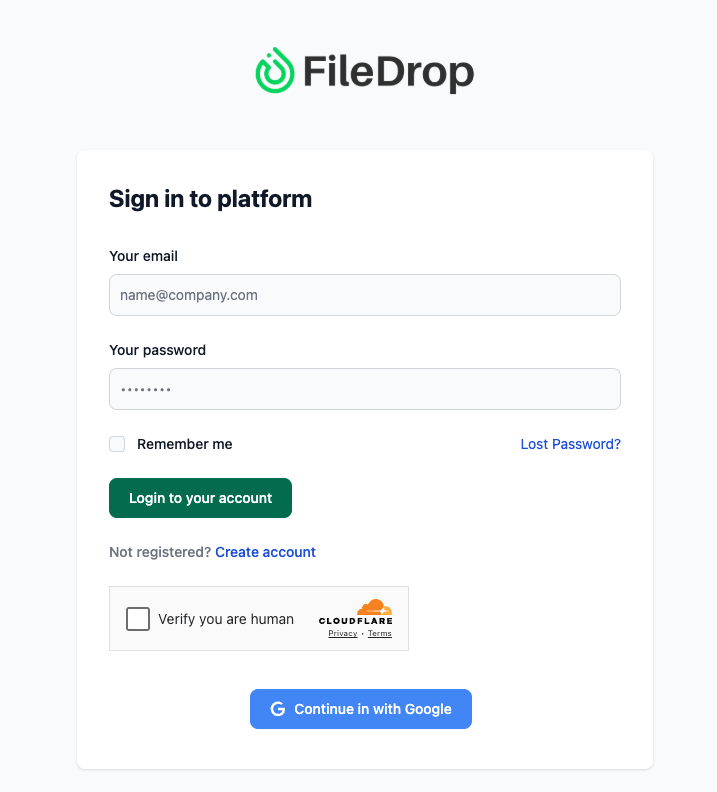
Step 2: Access the File Forms Dashboard
After logging in, navigate to the “File Forms” section on your dashboard. This is where you can manage, create, and customize secure file upload portals.

Step 3: Create a New File Form
Click on “Create New Form” and give your form a clear, client-facing name. For example: “Client Intake – Smith Law Group” or “Upload Legal Documents – Johnson & Partners”. This is what clients will see at the top of the upload page.
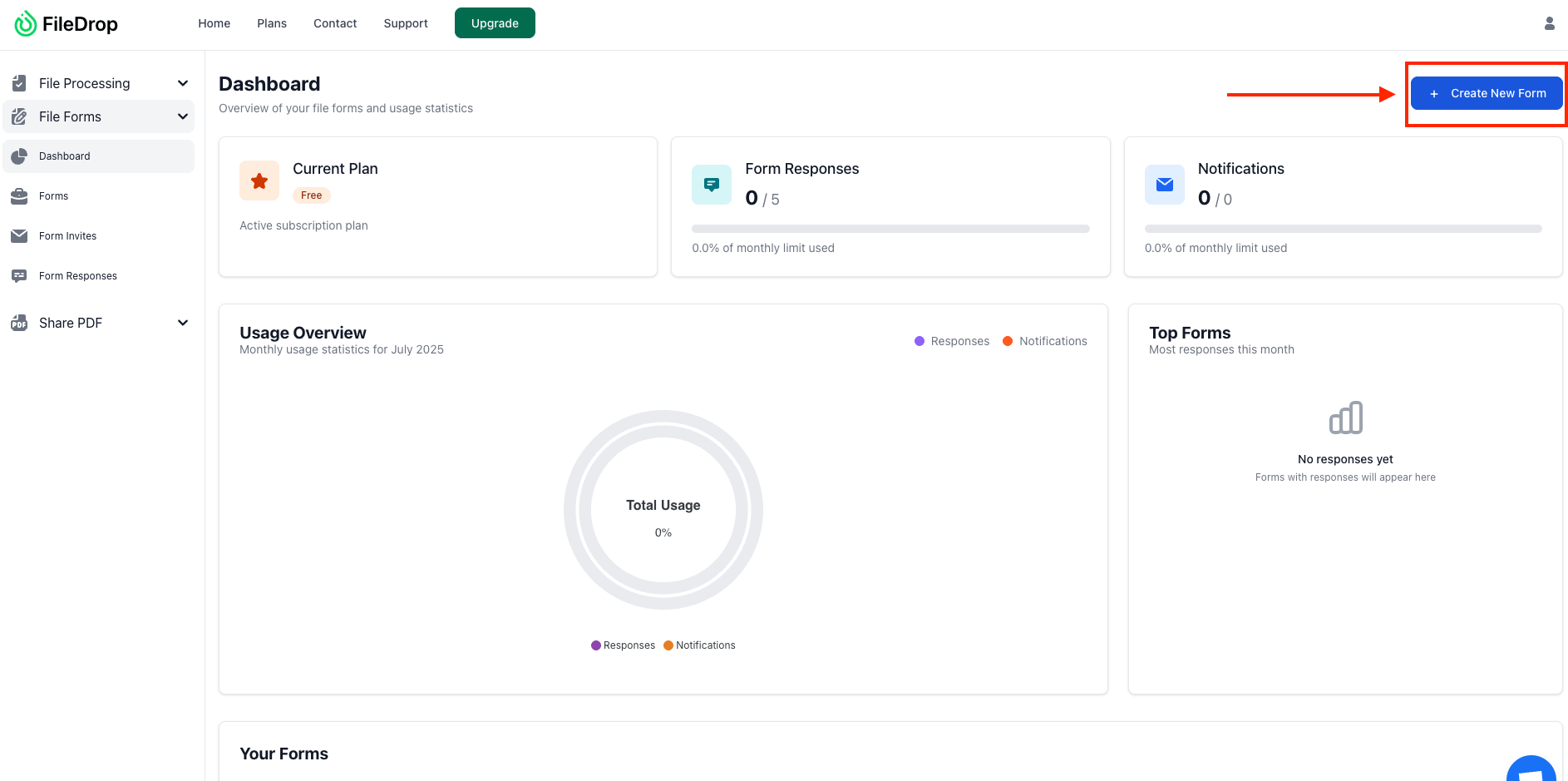
Step 4: Activate Google Drive Integration
Enable Google Drive Integration where you want client-uploaded files to be saved. You can also enable automatic subfolder creation based on client names or case numbers to keep everything neatly organized.
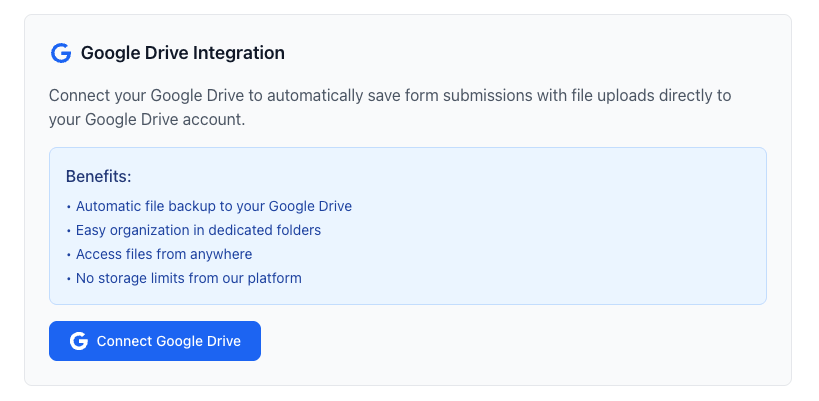
Step 5: Customize Form Fields
Add any fields you want clients to complete when uploading files. Common fields for law firms include:
- Full Name
- Email Address
- Case Number or Matter Reference
- Document Description or Type
- Optional Instructions or Questions
This information helps you track and file submissions more efficiently.
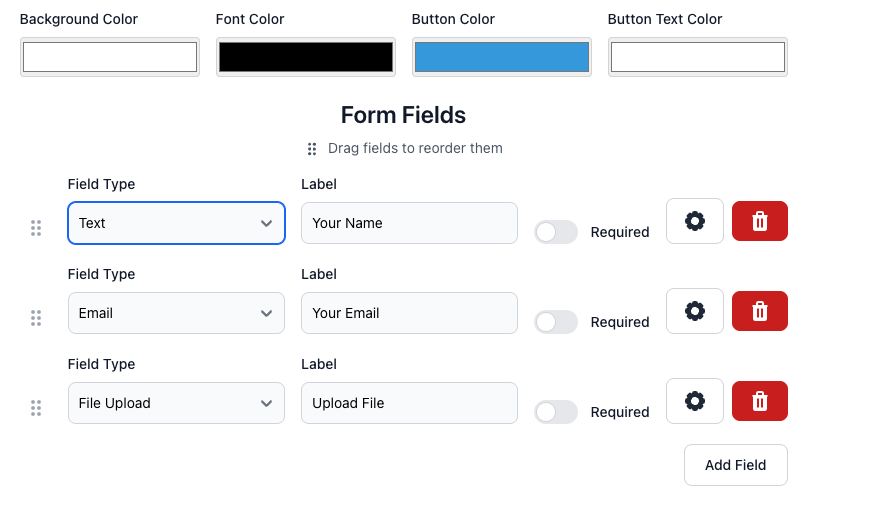
Step 6: Enable Notifications
Turn on email notifications so that your team receives alerts every time a client uploads a file. This allows for faster response and real-time case updates.

Step 7: Set Access Controls
Apply additional security settings such as:
- Password protection for the upload form
- Expiration dates for submission links
- Maximum file upload sizes or restrictions by file type (e.g., PDFs only)
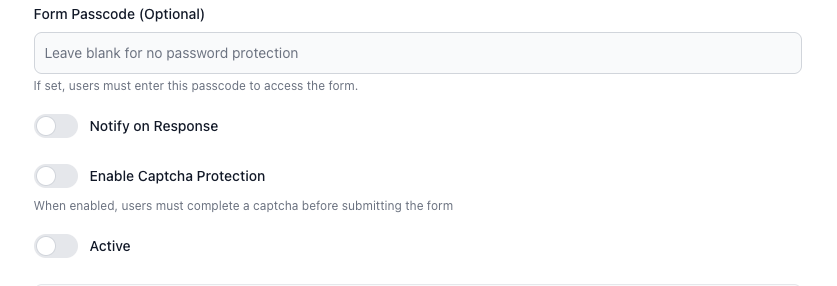
These settings ensure documents are handled securely and reduce risk.
Step 8: Add Your Branding
Customize the form to reflect your law firm’s branding. Upload your logo, adjust color schemes, and write a short welcome message to guide clients through the upload process. A professional look inspires trust and confidence.
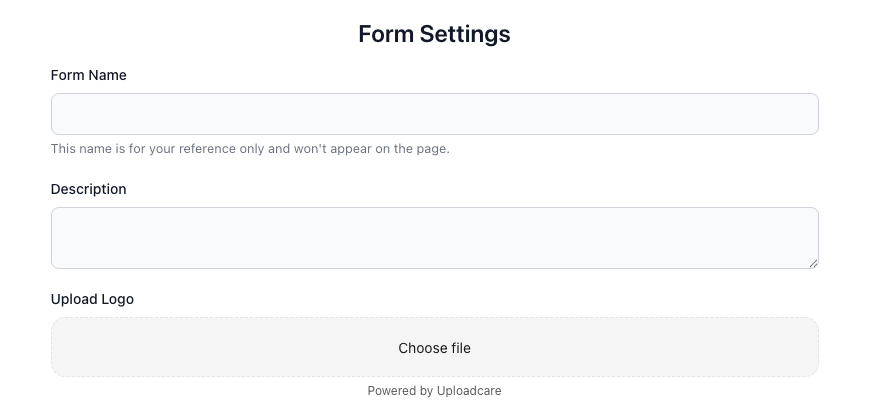
Once your form is ready, copy the secure upload URL and share it with clients via:
- SMS or encrypted messenger
- Your firm’s secure client portal
- A link embedded in onboarding emails or intake instructions
Clients can access the form from any device — desktop, tablet, or mobile — and upload files with just a few clicks.
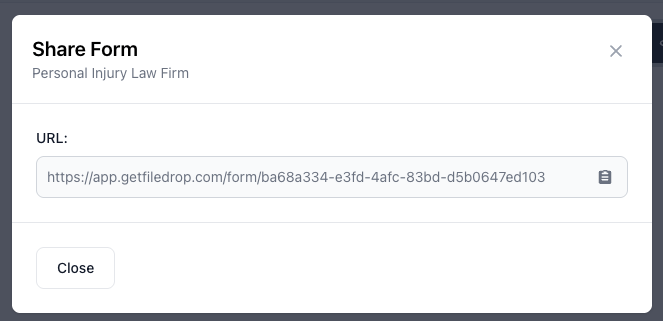
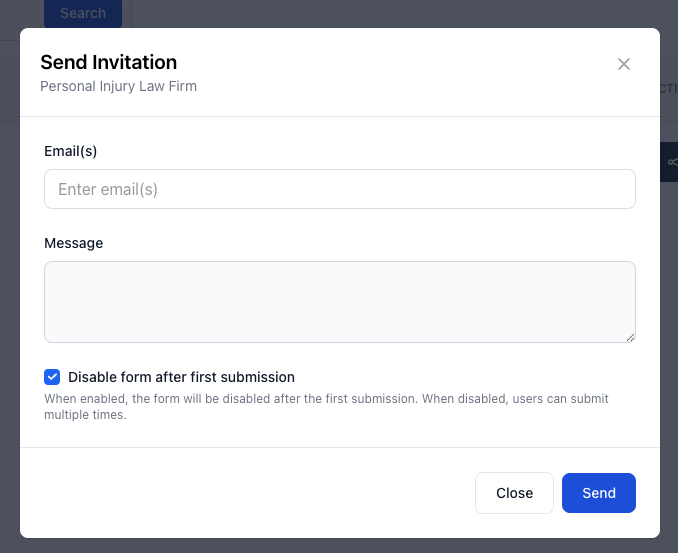
Once set up, clients can upload files directly from their phones or computers. The experience is user-friendly and completely frictionless — a major upgrade in how you collect documents from clients.
Bonus Feature: Log Uploads in a Google Sheet Automatically
Want an organized view of which clients submitted which files?
FileDrop allows you to connect your File Form to a Google Sheet. Each submission is automatically recorded with:
- Client name
- Submission time and date
- File names and types
- Case number or custom metadata fields
This log is helpful for compliance reviews, internal reporting, or simply keeping track of active cases. It also enhances visibility into your client intake process.
Final Thoughts
Email was never designed for secure document transfer — especially not in high-stakes legal workflows. FileDrop empowers law firms to collect and organize legal files quickly, professionally, and in compliance with privacy standards.
If your team is tired of lost attachments, disorganized inboxes, or compliance worries, it’s time to switch to File Forms — your new standard for secure legal file intake and a more streamlined client intake process.
Start today by creating your first secure form at getfiledrop.com and discover a more modern, compliant way to collect documents from clients.
The Bottom Line:
One keeps you awake. The other gets work done.
A month of coffee: $150
A month of FileDrop: $19
Why not have both?
